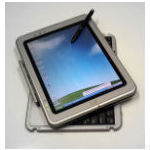 Peering into a future in which some 24 billion devices will be connected to the Internet, GSMA and Machina Research today released “Connected Life in 2020” at the Mobile World Congress in Barcelona.
Peering into a future in which some 24 billion devices will be connected to the Internet, GSMA and Machina Research today released “Connected Life in 2020” at the Mobile World Congress in Barcelona.
The telecoms industry stands at a tremendous inflection point as envisaged in the report, one that, based on the proliferation of smart devices of all kinds connected to broadband networks, “will open up new revenue streams, facilitate new business models, drive efficiencies and improve the way existing services are delivered to create a global business impact worth as much as US$4.5 trillion,” according to a press release.
“Today the connected devices market is dominated by mobile phones, but this will change in the future as a new wave of smartphones, tablets, consumer electronics and M2M (machine-to-machine) devices connect everything from cars to health services and even entire cities,” said Michael O’Hara, GSMA’s chief marketing officer. “The Connected Life will have a positive impact on many industries; however capitalizing on this enormous opportunity requires cross-sector collaboration to fully realize the power of mobile for the benefit of billions of people globally.”
The overall impact of this evolutionary change can be divided into two broad categories, according to GSMA: revenues and cost reduction and service improvements. Come 2020, revenues from the sale of connected devices, services and related services, such as pay-as-you-drive car insurance, will be worth some $2.5 trillion, GSMA forecasts. Some $1.2 trillion of that could be addressed by mobile operators and the rest by the broader “Connected Life” ecosystem, according to GSMA.
Though less direct and tangible, the business impact of cost reductions and service improvements are nearly as substantial in magnitude, worth around $2 trillion by 2020, GSMA says. US$1 trillion could come from cost reductions, such as smart meters eliminating the need for manual meter readings, while another $1 trillion could result from improving services, such as clinical remote monitoring of patients with chronic illnesses.
The healthcare industry and its customers, in particular, stand to benefit greatly, according to GSMA and Machina. Some $660 billion in cost reductions and service improvements could be realized by 2020 in the global healthcare industry alone. Moreover, mobile healthcare solutions, aka mHealth solutions, could go a long way toward reducing the cost of universal health care, GSMA points out.
The auto industry can be another big beneficiary in the evolution of the “Connected Life.” “Connecting cars will also help the global automotive industry to profit from the Connected Life, with its ecosystem set to generate $624 billion in revenues and reap US$727 billion in cost reductions and service improvements,” according to the GSMA-Machina report.
“By 2020, there is no doubt we will live in a much more connected world, which will have a fundamental impact on the way we live and work. This impact will not only open up new revenue opportunities for operators, but it will also facilitate a host of new business models, improve the way that companies do business and improve efficiencies in innumerable ways. Our estimate of the value of this is US$4.5 trillion, but the impact on and benefit to society is immeasurable,” stated Matt Hatton, Machina Research director.
GSMA and Machina’s report on the Connected Life lists the Top 10 connected applications in 2020. In addition to Connected Car, Pay-As-You-Drive Car Insurance, Clinical Remote Monitoring and Smart Meters these include: Assisted Living, Home and Building Security, Traffic Management, Electric Vehicle Charging and Building Automation.


